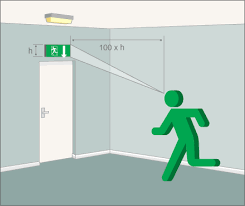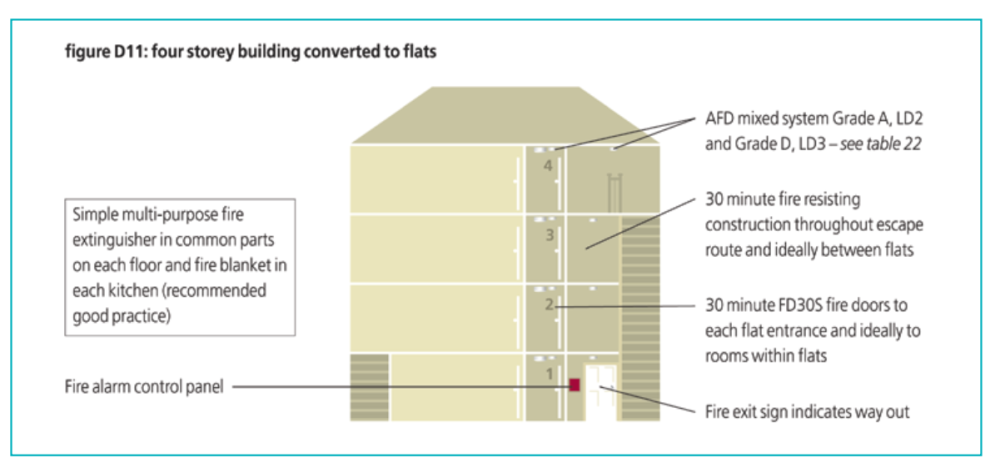-
Posts
2,324 -
Joined
-
Last visited
Posts posted by AnthonyB
-
-
The Government guidance clearly states that buildings with the floor of the top storey under 11m are not exempt from the need for fire door checks under Article 17 of the Fire Safety Order, only that the frequency of those checks is not prescriptive as per the Fire Safety (England) Regulations, for example a smaller block may decide through their risk assessment to only check communal doors 6 monthly and only check a percentage of flat doors annually rather than trying to check all of them.
-
The requirement for some form of self closer dates back to 1962 so that get out is a dead end. Unfortunately building standards in the last 25 years have dropped somewhat and it's entirely possible the building was passed whilst non compliant (which is why building control sign off isn't a defence against fire safety compliance issues - Grenfell Tower was passed by building control)
-
Building Regulations aren't retrospective so if an existing situation it isn't an issue unless some alterations are being carried out that would make the premises subject to the latest edition.
Sprinklers and protected stairways are sometimes accepted as an alternative. -
The distance should be measured from all parts of the premises to the nearest place of reasonable safety which is:
• a protected stairway enclosure (storey exit);
• a separate fire compartment from which there is a final exit to a place of total safety; or
• the nearest available final exit.Check Figure 32 in the sleeping risk guide - with a bedroom on a single direction corridor the total TD should not exceed 18m to the storey or final exit of which only 9m can be travel inside the room
-
Legislation isn't as strict for non domestic furniture but there is more guidance here: https://www.fira.co.uk/technical-information/flammability/fire-safety-of-furniture-and-furnishings-in-the-contract-and-non-domestic-sectors
-
That's the problem facing many buildings, often you can't. I'd consult someone competent in & insured for FRAEW for advice.
-
http://www.cieh.org/library/Knowledge/Housing/National_fire_safety_guidance_08.pdf is the main guidance, but as it's a bit old some councils have produced updated guidance for their areas so you should check the condition standards on the website for the council the property is located in.
-
No - see the LACORS guide.
The system wouldn't sound until conditions in the common stair were unsafe and the audibility wouldn't wake most occupiers. -
They usually only illuminate on alarm and not power failure and usually wouldn't put out the right light output in the right places, but if it's a property where guidance wouldn't require normal emergency lighting and would accept torches then they may be a useful supplement
-
Yes & Yes
-
It depends on the size and layout of the block - if you are using a competent fire risk assessor they should have addressed this. A self closer is essential in all cases and is considered a major issue if missing.
-
Most suspended ceiling systems are not fire resisting so unless there is evidence beyond reasonable doubt that it is you check above for the required fire resisting construction.
-
As a small building it would be fine with a single 30 minute front door.
-
The exit sign can be a normal one externally illuminated by a nearby emergency light as long as the EL is within 2m and provides at least 5lux of light on the sign.

-
Each unit would be responsible for it's own FRAs - if they have their own individual fire alarm systems, exits and 60 minute fire resistant party walls separating them then there would be no need for a landlord common FRA covering the whole building.
FRA requirements are based on who is the Responsible Person or Persons, starting with employers, then persons having control and finally if any areas not covered by either of those only then the landlord. So for your scenario there will be three employers, three premises, three FRAs
-
-
These are the most well known manufacturers of such products: https://envirograf.com/product-category/fire-doors/
-
No, but buyer beware if they aren't as there are a lot of people doing FRAs that don't really know what they are doing! I'm on one of the national registers - the consolidated list is here: https://www.firesectorfederation.co.uk/fire-risk-assessment/fire-risk-assesment-directory/
-
The Commercial property needs a fire risk assessment which must account for the effect of a fire in the ground floor on other relevant persons in the building (i.e. the flat) and so would look at fire separation between the commercial and residential areas and any need for a linked fire alarm.
The flat as a single private dwelling does not require an FRA, but the landlord has specific fire safety duties under the Housing Act 2004 & if in England the Smoke and Carbon Monoxide (England) Regulations 2015 (as amended)
-
Normally for life safety (human) & legal compliance purposes you wouldn't need alarm if a shout of fire or simple manual device such as gong, whistle or air horn would be heard throughout the building.
Otherwise a simple manual electrical system of a control panel with connected manual call points and alarm sounders is usually all that is needed (although depending on layout specific detection for situations such as inner rooms might be required). A variation in the normal design rules would usually be needed to avoid sound pressure levels that would frighten the animals.
Your fire risk assessment (a legal requirement even for farms and stables) should determine this - the official Government guidance is here (p57 for fire alarm info):
https://www.gov.uk/government/publications/fire-safety-risk-assessment-animal-premises-and-stablesProperty protection (not a legal requirement) would require provision of detection to areas of high fire risk and high value, although for some areas smoke detection would be affected by the environment (dust, wind, mist, steam, mites and flies etc) and heat detection would be needed, which is slower to react and would usually not save anyone (human & animal) in the room of fire origin. Insurers can advise on property protection - you should however ask specialists in agricultural insurance such as NFU Mutual https://www.nfumutual.co.uk/farming/farm-safety/loss-prevention-guidance-for-farms/
-
https://www.gov.uk/government/publications/fire-safety-approved-document-b
Select the appropriate guide for the premises type and the relevant tables are contained within.
-
The fire door will hold the fire back until it dies down due to lack of oxygen, the last thing you would want to do is open it. The fire loading & oxygen supply would be expected to be insufficient to sustain a fire long enough for the door to fail. That's why there is no requirement for detection
-
If a competent fire door risk assessor judges that it's liable to be to the standard at the time and is in suitable condition it's likely to be fine, especially of the original door (which would have expected to be a fire door)
-
It's only a single escape so would have to be limited to 60 regardless of how big the terrace is.
If due to usage it could be classed as a storey as it's over 11m it should usually have access to 2 stairs anyway.
These principles pre date the date of build and still apply now




Mr
in Landlords
Posted
Wireless systems are very established pieces of fire alarm technology and are absolutely fine complying with BS5839 and legislation, sadly there is a lot of ignorance out there amongst those who should know better!.
Grade A/Part1 wireless systems: https://www.safelincs.co.uk/wireless-fire-alarm-systems/
Grade D wireless systems: https://www.safelincs.co.uk/radio-interlinked-smoke-alarms/ (use the filter to take away the Grade F devices from the list)
I assume your FRA has determined the fire compartmentation between the flats is inadequate as that's the only reason you'd need a common system and an evacuate policy - if the required 60 minutes FR walls and floors are in place you don't need anything in the common areas as they sound too small to need a detector operated smoke control system.